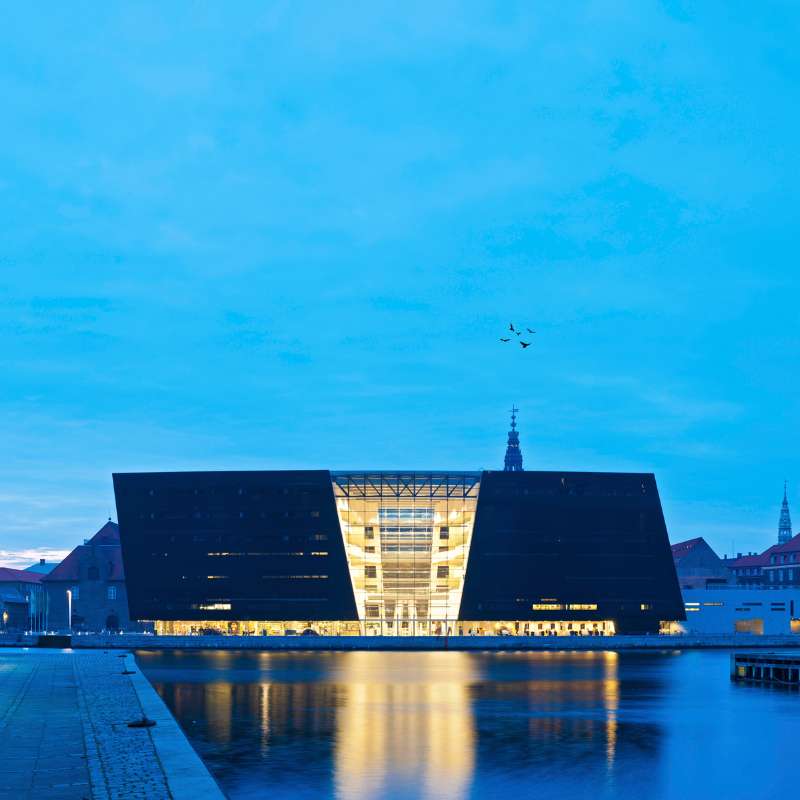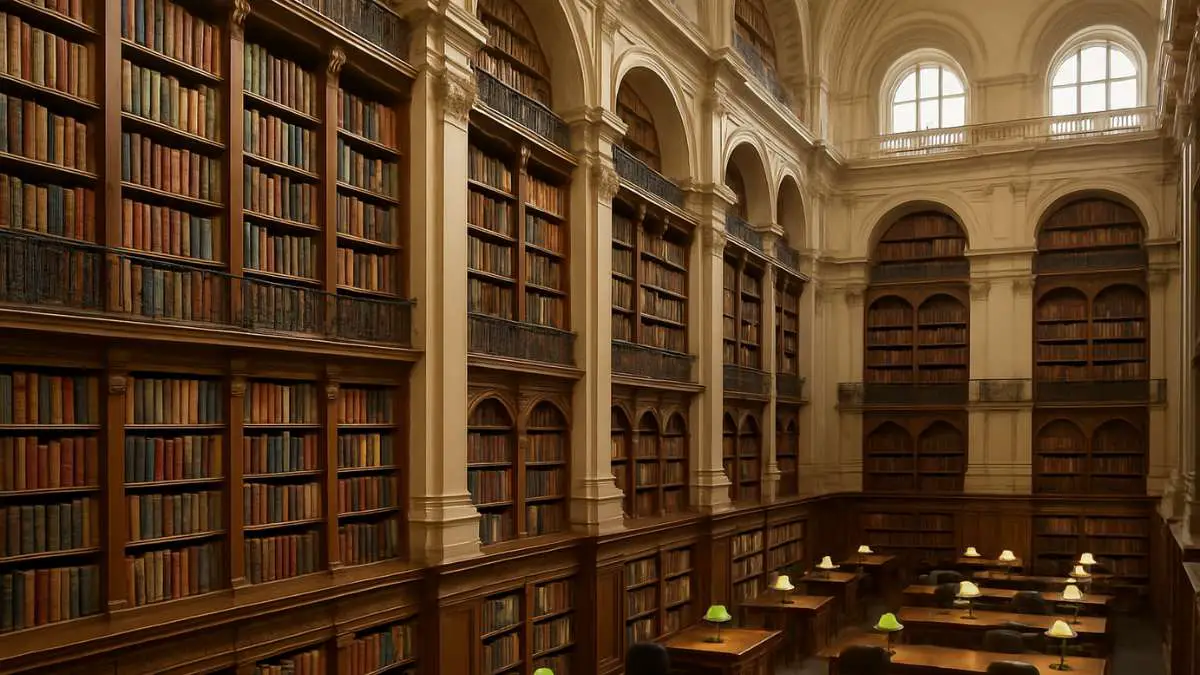Table of Contents
- Introduction
- 1. Library of Congress (United States)
- 2. British Library (United Kingdom)
- 3. Russian State Library (Russia)
- 4. New York Public Library (United States)
- 5. Library and Archives Canada (Canada)
- 6. National Library of China (China)
- 7. National Diet Library (Japan)
- 8. Bibliothèque nationale de France (France)
- 9. Royal Danish Library (Denmark)
- 10. German National Library (Germany)
- Conclusion
Introduction
There’s something timeless about a library. The hush of knowledge quietly waiting on shelves, the scent of paper and ambition, the democratic promise that anyone can walk in and walk out a little wiser. But in a world increasingly driven by digital data and short-form content, the largest libraries on Earth remain both bastions of civilization and quiet giants in a noisy world.
But size here isn’t just about square footage or architectural grandeur. When we talk about the “biggest libraries,” we’re talking about sheer volume—measured in millions of catalogued items, from manuscripts and monographs to maps and microfilms. These are institutions that archive human thought at scale, stretching across centuries, continents, and ideologies.
In this article, we’ll take a global tour through ten of the biggest libraries in the world, by collection size, not by hype. Some you’ll expect. Others might surprise you. But each one is a cathedral of knowledge, and together, they form the backbone of global intellectual memory.
1. Library of Congress (United States)
The Library of Congress in Washington, D.C., is not just the largest library in the United States—it’s the largest library in the world, full stop. With over 173 million items as of 2024, this temple of knowledge is home to everything from ancient manuscripts to today’s tweets.
Founded in 1800, the Library of Congress was originally intended to serve Congress’s legislative needs. But it rapidly expanded beyond its modest beginnings, particularly after the British torched the Capitol in 1814. Enter Thomas Jefferson, who offered his personal library of 6,487 books to replace the burned collection. The rest, as they say, is archival history.
Today, the Library houses materials in more than 470 languages, spread across 838 miles of bookshelves. It includes over 38 million books, 14 million photographs, 5.5 million maps, and more than 72 million manuscripts. There’s even a “surprise” collection of over 1.9 million sound recordings and films. From Babylonian cuneiform tablets to digitized PDFs, it is an unmatched monument to knowledge.
2. British Library (United Kingdom)
The British Library is one of the most influential cultural institutions in the world. With a collection exceeding 170 million items, it narrowly follows the Library of Congress in global rankings. Its collection spans every era, language, and format imaginable, including some of the most historically significant documents ever created.
Established in 1973, the British Library was born out of the British Museum Library, though its roots trace back much further. It holds treasures such as the Magna Carta (1215), Leonardo da Vinci’s notebooks, and original Beatles manuscripts—because pop culture is history now.
Every publication printed in the UK and Ireland is legally deposited here, which means the British Library adds approximately three million items each year—roughly eight thousand new items a day—an archival avalanche. The library also hosts the UK’s national sound archive, an increasingly valuable trove in the age of fading analog audio.
3. Russian State Library (Russia)
Located in Moscow, the Russian State Library is the largest library in Russia and the third-largest in the world by collection size, with over 130 million items. It was established in 1862 as the Moscow Public and Rumyantsev Museum and later evolved into a national library.
The Russian State Library is particularly notable for its strength in Slavic and Russian language materials. It holds over 17 million books, four million maps, and a staggering 13 million journals and periodicals. Its special collections include early printed books, rare incunabula, and more than a few documents of political intrigue.
This library is also unique in being a scientific research institution. It plays a central role in the Russian Federation’s information infrastructure and academic ecosystem. Despite bureaucratic hurdles and periodic underfunding, the library continues to digitize vast swaths of its holdings, especially relevant as it navigates the complexities of 21st-century geopolitics.
4. New York Public Library (United States)
The New York Public Library (NYPL) is both an intellectual powerhouse and a pop culture icon. It appears in films, TV shows, and tourist selfies—but behind the lions of Fifth Avenue lies one of the world’s most significant public library systems, holding more than 92 million items.
Founded in 1895, the NYPL is unique in its hybrid nature: it functions as both a privately managed nonprofit and a publicly supported system. It operates 92 locations across Manhattan, the Bronx, and Staten Island, making it a crucial access point for underserved communities.
Its research collections are unrivaled in many areas. The Schomburg Center for Research in Black Culture, the Performing Arts Library at Lincoln Center, and the Stephen A. Schwarzman Building are just a few of its renowned branches. The NYPL also offers a robust digital archive and was among the first to embrace open access for its digital collections—a nod to the city’s forward-thinking ethos.
5. Library and Archives Canada (Canada)
Canada’s national library, based in Ottawa, is a combined institution that merges the national library and national archives into one: Library and Archives Canada (LAC). As of 2024, it houses more than 70 million items in its collection, with holdings in English, French, and Indigenous languages.
LAC was created in 2004 through the merger of the National Library of Canada and the National Archives of Canada. It has since grown into one of the most comprehensive collections of Canadian heritage, containing everything from governmental records and historical maps to millions of photographs and audio recordings.
What makes LAC unique is its explicit commitment to reconciliation and diversity. Its Indigenous Heritage Action Plan and collaborative digitization projects with First Nations communities set it apart from more traditional national libraries. The institution also manages the legal deposit system for Canadian publications and leads the preservation of born-digital materials.
6. National Library of China (China)
With more than 60 million items, the National Library of China (NLC), located in Beijing, is a monumental institution in scale and significance. Originally established in 1909 as the Imperial Library of Peking, it has since evolved into one of the most important knowledge centers in Asia.
Its collection includes over 35 million printed books and periodicals, including the largest trove of Chinese literature in the world. From oracle bones and bamboo slips to Qing dynasty imperial documents, the NLC is a repository of China’s dynastic, revolutionary, and postmodern narratives.
A unique aspect of the NLC is its emphasis on preserving traditional formats. Ancient scrolls, thread-bound books, and early woodblock prints sit alongside digitalized newspaper archives and multilingual databases. And given China’s ambitions to become a global intellectual and technological powerhouse, the NLC plays a quiet but strategic role in soft power and national identity.
7. National Diet Library (Japan)
The National Diet Library (NDL), with approximately 44 million items, is Japan’s sole national library. It was founded in 1948 to assist lawmakers—hence the name “Diet,” referring to Japan’s national legislature—but it has grown into a national cultural guardian and academic goldmine. Its vast collection includes the early collections of The Tale of Genji, arguably the world’s first novel.
The library maintains two primary facilities: one in Tokyo and the other in Kyoto. Between these, the NDL serves not only government officials but also the general public and scholars. It houses one of the world’s most extensive collections of Japanese publications, including legal documents, modern monographs, and a dizzying array of manga and graphic novels.
NDL’s strengths lie in its meticulous curation and user accessibility. It has long been an innovator in digital archives, providing scanned materials with multilingual metadata—a rare feature in national libraries. Its online portal houses over 3 million digital items, making it a go-to resource for international researchers studying East Asia.
8. Bibliothèque nationale de France (France)
The Bibliothèque nationale de France (BnF) is a jewel of French cultural pride. With a collection exceeding 43 million items, it’s one of Europe’s oldest and most prestigious libraries. Established in 1368 as the royal library of Charles V, it has endured monarchy, revolution, republics, and wars, and still thrives today.
The BnF’s multiple sites are architectural masterpieces, from the 17th-century Richelieu site to the modern François-Mitterrand site on the Left Bank of the Seine. Together, they house treasures like original Gutenberg Bibles, medieval illuminated manuscripts, 16th-century atlases, and first editions of works by Voltaire and Proust.
In keeping with France’s digital-forward policies, BnF launched Gallica, one of the most extensive digital libraries in the world, featuring millions of documents accessible for free. The institution also plays a central role in preserving audiovisual materials, rare musical scores, and philosophical correspondence from thinkers who reshaped humanism and Enlightenment thought.
9. Royal Danish Library (Denmark)
Sometimes referred to as “The Black Diamond” due to its stunning modernist architecture, the Royal Danish Library in Copenhagen is not just a library—it’s a cultural experience. With more than 42 million items, it serves as Denmark’s national library, university library, and legal deposit institution.
Founded in 1648, it was merged with the State and University Library in Aarhus in 2017 to form one massive institution. The combined collection includes everything from ancient Nordic manuscripts to contemporary Danish media, photographs, and digitized sound recordings.

A standout feature of the Royal Danish Library is its commitment to sustainability and democratic access. Its public programs, exhibitions, and research support initiatives are designed to elevate cultural literacy. The library also acts as a hub for literary festivals and intellectual debate, giving it a dynamic presence in Danish civic life.
10. German National Library (Germany)
Germany’s official repository of knowledge, the Deutsche Nationalbibliothek (DNB), ranks as one of the world’s largest libraries with over 41 million items. Established in 1912, the DNB now operates two main branches: one in Frankfurt and another in Leipzig, reflecting Germany’s complex historical geography.
The library holds every German and German-language publication printed since 1913, making it the most comprehensive archive of German literature and scholarship. Its collection is rich in philosophy, history, science, and—unsurprisingly—critical theory. If you’re looking for the entire oeuvre of Hegel or every publication on Bauhaus design, this is the place.
What sets the DNB apart is its role in bibliographic control and metadata governance. It’s a key player in establishing international cataloguing standards, such as the Integrated Authority File (Gemeinsame Normdatei, or GND). It also spearheads efforts in preserving born-digital content, ensuring that digital ephemera won’t disappear like yesterday’s memes.
Conclusion
The biggest libraries in the world are far more than vaults of paper—they’re engines of memory, guardians of identity, and sometimes battlegrounds of ideology. In an age of rampant disinformation and fragmented attention, these institutions are quietly doing the work of cultural preservation, one catalogued item at a time.
Their sizes—measured in millions—only tell part of the story. The real power of these libraries lies not in how much they store, but in what they represent: the persistent human desire to learn, archive, challenge, and share. Whether it’s a state-funded colossus or a hybrid public-private system, each of these libraries reflects its nation’s history, priorities, and global footprint.
The future of libraries might involve more AI-powered search tools, decentralized archives, and open access platforms, but the mission will remain constant. These ten institutions serve as both mirrors of civilization and launchpads for its next iteration.
So, the next time you walk into a library, large or small, remember: you’re entering humanity’s longest-running open-source project.
